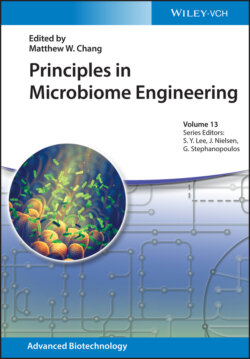Читать книгу Principles in Microbiome Engineering - Группа авторов - Страница 13
1.1.1 Microbiome Diversity in Human Body
ОглавлениеRegional microbiota varies at different parts of the human body or organs resulting from the changes of the environment that is established by the host biochemistry and the pre‐existing microbes that inhabit the area. Thus, it is safe to say that no two persons' microbiome is identical since the equilibrium of the microbiome is constantly altered in individual hosts over the various stages of growth as revealed by multiple research studies [3]. Strikingly in 2007, an international effort to characterize the microbial communities in the human body called the Human Microbiome Project (HMP) set forth to establish a “healthy cohort” reference database using hospital‐acquired samples [4, 5]. The HMP, a US National Institutes of Health (NIH) initiative capitalized on the decreasing cost of whole‐genome sequencing technology and advanced metagenomic sequencing technology to systematically map out these microbiome variations in healthy and diseased patients [4–6]. The first phase of HMP studied samples isolated from five major body sites: nasal passages, oral cavities, skin, gastrointestinal (GI) tract, and urogenital tract [4, 6]. As this book chapter is on the subject of diet‐related influences on the microbiome, we will discuss more on the oral and gastrointestinal microbiome and briefly touch on the microbiome of other sites.
